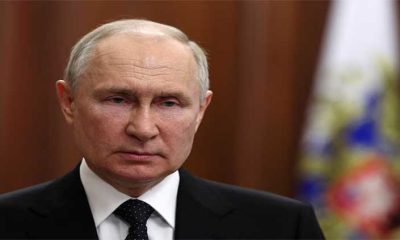The US dollar index experienced its first weekly fall in 2024 on Friday as investors took a breather from buying the currency following an almost two-month rally built on expectations that the Federal Reserve will begin cutting rates later than previously expected.
Investors have pushed back expectations for the first Fed rate cut to June, from May, and dramatically reduced how far they see the US Federal Reserve cutting its benchmark rate. Fed officials have projected three 25 basis point cuts this year, while markets had priced for as many as seven.
“The dollar’s rally this year has been predicated on the markets converging back to the Fed,” said Marc Chandler, chief market strategist at Bannockburn Global Forex in New York.
Traders may also be pricing for the likelihood that economic data will begin to slow.
“I think starting with the February jobs data, which is due March 8, we’re going to begin seeing a series of weaker US economic data,” Chandler said.
Personal Consumption Expenditures (PCE) due next week may also provide clues for Fed policy.
New York Fed President John Williams sees the US central bank on track for interest rate cuts “later this year,” despite stronger-than-expected readings on inflation and the labour market in January, according to an interview published Friday by Axios.
The dollar index was little changed on the day on Friday at 103.96 and had a weekly loss of 0.32 per cent. It has bounced from a five-month low of 100.61 on Dec 28 and is holding below a three-month high of 104.97 reached on Feb 14.
The greenback has risen this year on enduring economic strength and as Fed officials caution against cutting rates too soon as they seek to bring inflation back closer to their 2pc annual target.
Now, however, investors are waiting on further economic indicators for fresh clues on monetary policy.
“It’s not the time yet to sell the dollar, but we think it will start to weaken in the second quarter, assuming that the Fed will cut in June and continue cutting rates once a quarter,” said Athanasios Vamvakidis, global head of G10 forex strategy at BofA Global Research.
BofA expects the euro to strengthen to 1.15 versus the greenback by the end of the year.
“If the US economy remains so strong, we have to change our view, as the Fed might not be able to cut in June or not even this year,” Vamvakidis added.
Improved risk appetite that has seen stock markets set records in several countries this week may have also reduced demand for the US currency, which is seen as a safe haven.
The euro was little changed on the day at $1.0822. It has dropped from $1.11395 on Dec 28, but is up from $1.0695 on Feb 14.
German business morale improved in February, a survey showed on Friday, though probably not enough to prevent Europe’s biggest economy from slipping into another recession.
ECB President Christine Lagarde on Friday called the relatively benign fourth quarter wage growth data encouraging but not yet enough to give the European Central Bank confidence that inflation has been defeated.
YEN WORST PERFORMER
The yen is the worst-performing G10 currency this year, with the greenback gaining 6.7pc against the Japanese currency.
The dollar fell 0.02pc to 150.5 yen on Friday.
The Japanese currency is headed for a fourth weekly drop as investors chased better yields just about everywhere else, wagering Japan’s rates would stay near zero for some time.
With the Fed expected to hold rates higher for longer, investors are staying in carry trades in which they sell or borrow the yen and invest in higher yielding currencies.
“For the dollar/yen to weaken, we need the Fed to start cutting rates,” said BofA’s Vamvakidis.
Post Views: 36


 Fashion3 months ago
Fashion3 months ago
 Sports3 months ago
Sports3 months ago
 Sports3 months ago
Sports3 months ago
 Fashion2 months ago
Fashion2 months ago
 pakistan3 months ago
pakistan3 months ago
 World3 months ago
World3 months ago
 pakistan3 months ago
pakistan3 months ago
 Tech3 months ago
Tech3 months ago



















